Comprehensive Guide to Fire Door Components: A Visual Breakdown
As a leading Chinese fire door manufacturer, Guangdun Door Industry is committed to helping our customers understand the intricate details of fire door components. Often, during after-sales service, customers struggle to describe damaged parts, leading to miscommunication and delays in repairs. To bridge this gap, we’ve prepared a detailed visual guide to fire door components and their functions. This guide will enhance your understanding of fire doors, aiding in better communication and faster service.
1. Self-Closing Function for Double-Leaf Fire Doors
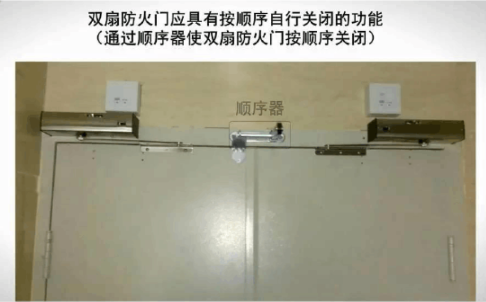
Double leaf fire doors should have the function of self closing in sequence
(Use a sequencer to close the double fire doors in sequence)
Double-leaf fire doors are designed to automatically close in sequence. This feature ensures that the door effectively seals off areas during a fire, preventing the spread of flames and smoke. The proper installation and maintenance of this component are crucial for the door’s fire resistance rating.
2. Fire Locking Mechanism for Inspection Doors
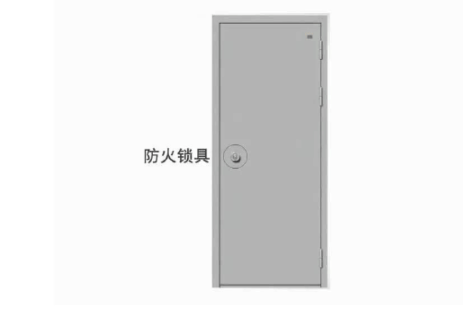
Fireproof lock
Inspection doors for utility shafts should be equipped with specialized fire locks. These locks ensure that the door remains securely closed, contributing to the overall fire protection of the building. Fire locks must meet national standards and be certified by authorized testing bodies.
3. Signage for Normally Closed Fire Doors
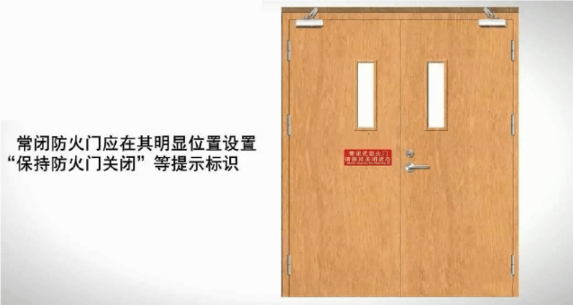
Normally closed fire doors should be installed in a prominent position
Warning signs such as’ keep fire doors closed
All normally closed fire doors must display prominent signage such as “Keep Fire Door Closed.” This ensures that the door remains in its intended position, maintaining the fire barrier and adhering to safety regulations.
4. Fire Door Closers
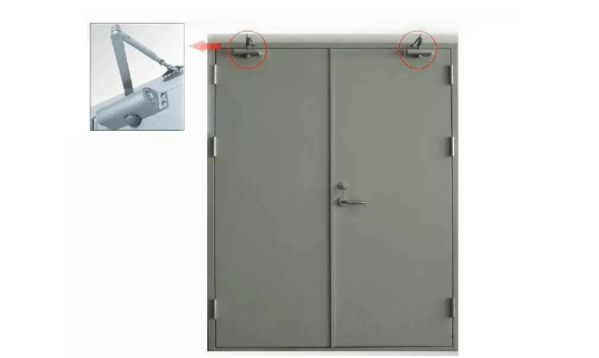
Fire doors must be equipped with door closers or an automatic closing device for normally open fire doors. These closers ensure that the door shuts automatically in the event of a fire, preserving the integrity of the fire compartment. It’s essential that these closers are tested and certified by nationally recognized testing institutions.Fire Door Components.
5. Fire Locks
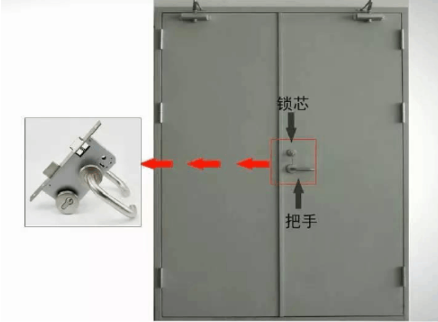
Fire door locks must be fire-rated to ensure they do not fail under extreme temperatures. Only locks tested and certified by authorized institutions should be used, ensuring compliance with fire safety standards.
6. Utility Shaft Locks
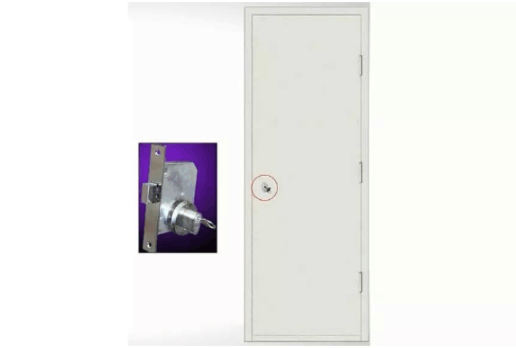
For utility shaft doors, a specialized lock, such as a utility shaft lock, can be used to secure the door without needing a fire door closer. This option is ideal for locations where door closers may not be practical.
7. Fire Door Components-Fire Hinges
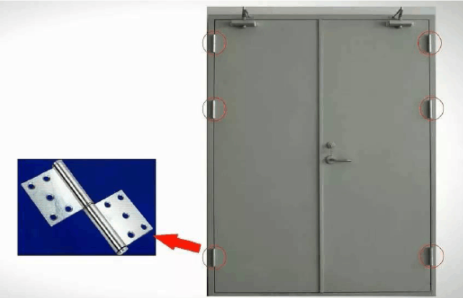
Fire door hinges must be robust, with a plate thickness of no less than 3mm, to withstand high temperatures during a fire. Properly installed fire hinges ensure the door remains functional under fire conditions, maintaining its fire rating.Fire Door Components。
8. Door Coordinator
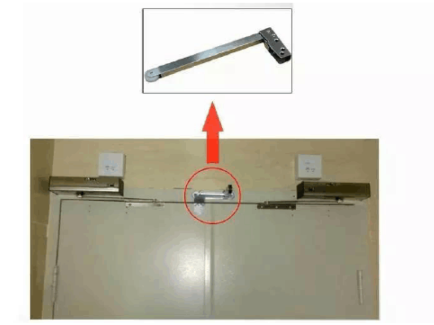
For double-leaf or multi-leaf fire doors with overlap or rebate structures, a door coordinator must be installed. This device ensures the doors close in the correct order, maintaining the effectiveness of the fire seal.
9. Fire Bolts
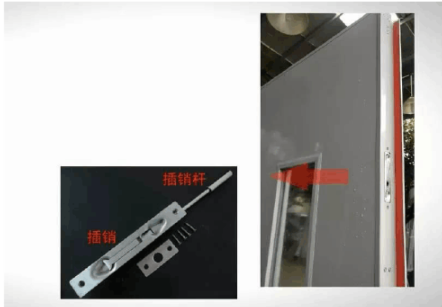
Fire bolts made of steel should be installed on the fixed leaf of double or multi-leaf fire doors where required. These bolts provide additional security, ensuring that the door remains closed during a fire.
10. Cover Strips
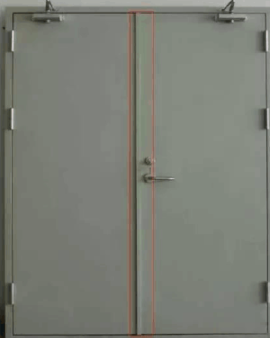
Double-leaf fire doors with flat or rebate structures should have cover strips. These strips must be securely attached to the door leaf and should not interfere with the door’s operation. Proper installation of cover strips enhances the door’s fire resistance.
11. Fire Seals
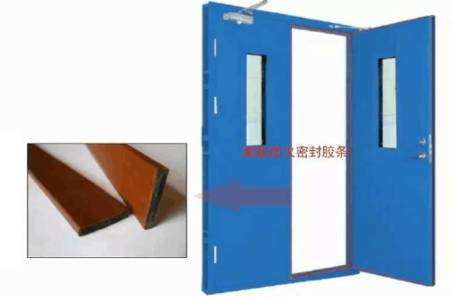
Fire seals must be installed in the gaps between the door frame and leaf, as well as between the door leaves themselves. For instance, intumescent fire seals expand when exposed to heat, sealing gaps and preventing the spread of smoke and flames. All fire seals must be certified by recognized testing bodies.
12. Fire-Resistant Glass
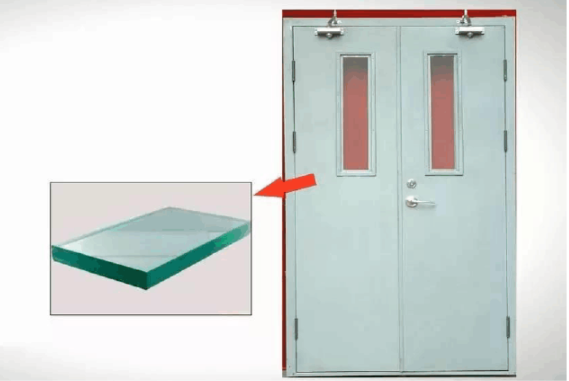
If a fire door includes glass, it must be fire-rated glass that meets the specific fire resistance requirements for that door type. Certified fire-resistant glass ensures that the door retains its integrity even with glazed sections.
13. Panic Push Bar (Emergency Exit Lock)
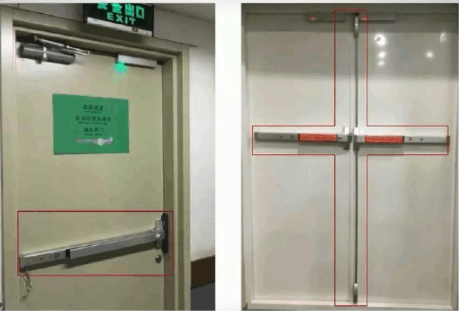
Panic push bars, commonly used in emergency exits, allow for quick and easy egress in case of an emergency. These locks are typically found in high-traffic areas such as malls, supermarkets, and entertainment venues, providing both fire safety and security.
At Guangdun Door Industry, we pride ourselves on our fire-resistant and fireproof doors that also offer superior security features. Our doors are known for their sturdy construction and sleek design, making them an ideal choice for high-rise residential buildings. Established in 2015, our Kunming-based industrial park spans over 300 acres, with a construction period of two and a half years. Upon full operation, our production capacity is expected to reach 400,000 doors annually. Guided by our core values of creating value for customers, providing opportunities for employees, and building the Guangdun brand, we strive to become a specialized, refined, and strong leader in the fire door manufacturing industry.
